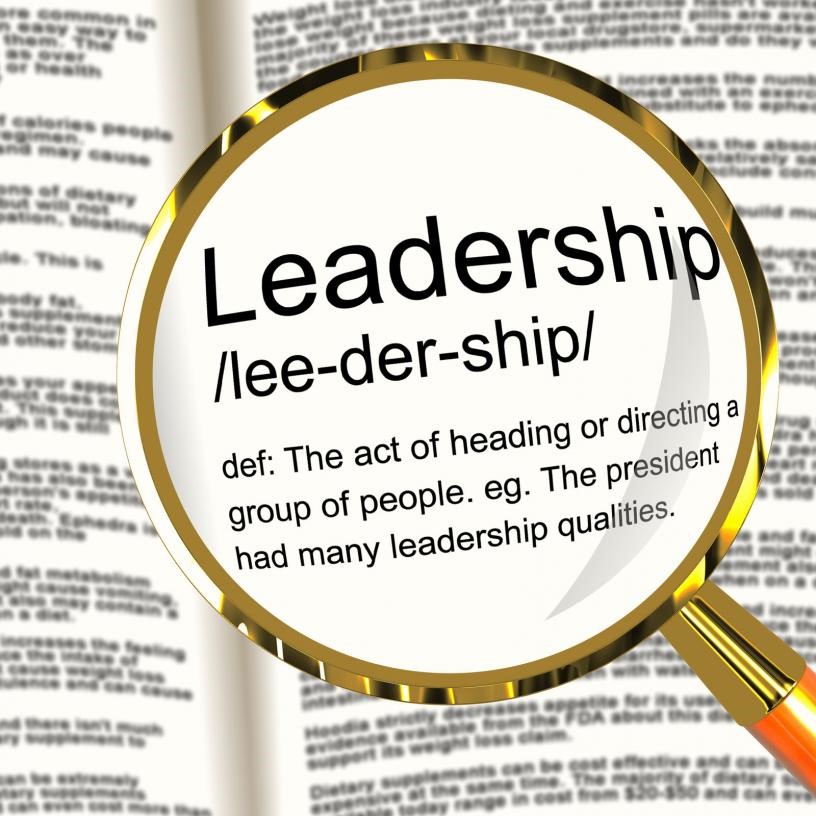leadership development
Leadership Game | “Yes! And…” | A Fun Improv Game With A Leadership Lesson!
Leadership Game | “Yes! And…” | A Fun Improv Game With A Leadership Lesson!
Description
In college, I took Improvisation for Actors. It was a class where through interactive games, you practice acting, problem solving, or just reacting in the moment and in response to the stimulus of one’s immediate environment and inner feelings. One of my favorites that semester was the game: “Yes! And…” It’s purpose, I was told, was to ingrain the actor in me with a positive mindset – a skill necessary not just for acting and improv, but also for anyone who wishes to be an effective leader.
Throughout the game, volunteers come to the front one pair at a time and converse with each other in front of the group. However, the players must always beginning every response with “Yes and…” then continue the sentence in a positive manner following the lead of your partner. It’s not only a fun way to play and bond with your team, it also leads in to a great leadership discussion.
Purpose
Quick and positive thinking are highly valued in improvisation because when a player adopts a negative mindset (using “But” or “No”) a scene will not advance optimally and naturally as is the intent. However, these skills are also necessary for anyone who wishes to be an effective leader. Leaders often need to exhibit a forward moving attitude even when the unexpected occurs and adapt to new directions and ideas that might be different from their own personal vision or beliefs. This great game is great for practicing positive thinking and lots of fun too! It also teaches you how to always have something to say.
Group Size
15-25 participants. Smaller groups work best but I’ve used this well in groups of 250+.
Only 2 volunteers play at a time in front of the group.
Materials Required
No materials required.
optional – use a dry erase board for writing participant’s key point answers and “a-ha!” moments during discussion.
Time Required
10-15 minutes
[divider height=”30″ line=”1″]
INSTRUCTIONS
Step 1:. You will explain the rules of “Yes! And…” giving a sample dialog with yourself, or if possible, enlist the aid of a student helper who has played before or who you can teach the game prior to the session
Tell your group:
In this game partners will have a discussion between themselves in which both must listen to what their partner says, then respond to whatever it was they said beginning your sentence with the words “Yes! And…” then complete the sentence in a positive upbeat manner that will not only support but expand the original concept bringing it to the next level.
For example
Player A says: “This classroom is sure filled with a bunch of desks!”
Player B responds: “Yes! And I heard that at last count there was more that a million!”
Player A says: “Yes! And if we stacked them all one on top of the other they would reach the moon!”
Player B responds: “Yes! And that would sure be a great way to get to the moon rather that a rocket.”
Player A responds:“Yes! And I’ve always wanted to go to the moon since I’ve heard its made of green cheese!”
Play B responds: “Yes! And I hear that every third Friday is cheese tasting night up there!”
Explain: Players will continue this conversation until I shout “Cut!”
Step 2: Pick two volunteers who want to give it a go!
Step 3: Either allow the first speaker to begin with a random statement or involve your group letting them call out a topic for the players to follow.
Step 4: Let them create their dialogue allowing it to grow more and more outrageous. When the pair reaches a big laugh shout “And… Cut!” in your favorite Hollywood director voice. If they don’t reach a laugh cut them after several responses and send them off with applause as well.
Step 5: Always, encourage players to “Thank your partner for playing with you!” before they part.
Step 6: Allow every pair of volunteers to return back to the group with a round of applause.
Step 7: Bring up two more volunteers and do it again and again till everyone who wants to has had a turn before turning the activity to discussion.
[divider height=”30″ line=”1″]
DISCUSSION IDEAS
- Talk about the positive thinking skill as it related to the “Yes and…” game they just played and ask your group, “In what way is this an important skill for an actor or someone who plays these improvisation games?” Discuss with your group how this skill of moving forward with a positive attitude can also work to the benefit of their leadership team and more so, as a leader on their campus.
- Ask the group, “How did the game make you feel with the pressure from having to quickly answer on a strangely evolving topic.” And, “How do you feel when someone presents answers or goes in a different direction all together from what you specifically had in mind as the leader?” “How do you handle it?” “How should a leader handle these situations?”
- Explain that this game is often played by improvisation groups to build flexibility and quick thinking – two highly desired skills by any actor. Ask “What other skills make for a good improv players?” “Why?” If possible, write down answers the skills on the dry erase board for easily referral for the next question.
- As a continuation to #3, ask “Which of these skills could also be a skill important to you as a leader?” “Why?” Encourage them to give examples and possible scenarios.
[divider height=”30″ line=”1″]
COMMENTS
- Try leave on a good note. When you shout “and cut”, do it at the end of a “Yes and…” comment that gets a good laugh from the group.
- Remember, like many leadership and team-building games, this in not just a quick game in route to an object lesson. This game actually is great practice in developing these invaluable leadership skills. Incorporate this and other leadership skill building games into your leadership or student council class on a weekly basis.
- Ideas stick better when accompanied by a personal example. Your students will gain greater retention of your discussion points when they accompany their basic answers with an example or descriptive story, hypothetical or real, that involves how they have or will use their leadership skills in a personal away. Encourage this sort of response and ask follow up questions if you must.
- New at leading group games? Check out this article that explains the simple secrets that will leave you leading games like a pro! Playing With A Purpose: Simple Secrets To Leadership Games That Teach And Inspire
• • • •
Do you have a great follow up discussion question or idea that would benefit this game? A twist on the normal play? Or perhaps a different improvisation game that leadership teachers and trainers could use to demonstrate and develop leadership skills with their students? Let us know! We want to hear from you!!
Team Building Games and Activities
Be it a soccer match, a classroom project, or a business deal, it is only as successful as the team behind it is. Having a strong team with ambitious team leaders, cooperative members, and an undying team spirit not only keeps the members motivated and interactive, but it also breaks the barriers between mindsets to promote their creativity and problem-solving skills. Benefit from the following team builders in order to get involved into exciting and interactive team building exercises within your group.
Consensus
An excellent exercise aimed at team building and teamwork, Consensus promotes the importance of unity, agreement and compromise among all team members. This team builder can be especially effective in school trainings or student leadership sessions.
Easy to execute, without any material or space requirements, the activity requires all participants to split up into smaller groups of 5-6 people and cluster together to agree on a particular noise and action to perform for other teams. Once each group has demonstrated their act twice, the facilitator should allow them to huddle once again to recall all groups’ acts, and prepare themselves for a collective performance of with all the teams. This activity holds an objective for all the teams to keep regrouping, and repetitively attempt a collective act to ultimately do the same noise and action together, without any consultation between the teams.
After the activity, discuss and debrief the participants on their difficulties to reach a consensus, whether they needed any leadership intervention, their frustrations due to the communication barriers between teams, and any compromises that they had to make to reach an undivided final outcome.
Walk Together
As the name suggests, this activity requires all team members to walk together, but with their ankles tied to each others’. An idyllic team builder for building group trust, team cooperation and problem solving skills, a Walk Together activity works best for both students and employees.
Owing to its mobile nature, it is best to employ this team building activity in open spaces without any obstacles. Start by splitting a large group into smaller ones with no more than eight people each. While cloth strips or masking tape may be ideal, you may simply ask the participants to use their shoe laces to tie their ankles to both their neighbors’. The idea is to challenge the whole team to devise a strategy, coordinate with each other, and trust each other’s instincts to successfully walk together towards the finishing line, without any team member falling.
Once you have a winning team, gather all participants to discuss how they felt about their teammates during the activity, whether they helped or hindered each other’s progress, and what kind of collective effort and cooperation was required to be successful at the task.
Scavenger Hunt
An immensely proactive and competitive team challenge, scavenger hunts are timeless classics among team builders. The material and space requirements are individualized; however scavenger hunts are mostly carried out in several locations due to the ‘hunting process.’ Facilitators and trainers devise a plan where participants are split into groups and each group is handed a list of tasks to accomplish in a limited time span and under some specific rules and conditions. Teams are given points on their achievements, punctuality and penalized for any rule violations. Scavenger hunts have proven, time and again, to be a very sporty and exciting way to promote leadership skills, team bonding, team work planning, and coordination among the members.
Public Speaking 101
Your purpose is to make your audience see what you saw, hear what you heard, feel what you felt. Relevant detail, couched in concrete, colorful language, is the best way to recreate the incident as it happened and to picture it for the audience – Dale Carnegie
If facing a large audience gives you shivers, and the thought of public speaking gives you pangs of nervousness, make sure to follow these basic guidelines before you prepare for your next public speech or presentation.
Make the introduction gripping, and the content clear and concise
The content of your speech is the backbone of your success. Remember that first impressions are the last ones too, and aim to capture the attention of your listeners with your first expression. Starting with an inspirational quote, or a relevant short story, may work well to grip an audience. Ryan McLean highlights the importance of a captivating beginning by saying, “Your introduction needs to establish with the audience why it is important to them and why they should be listening to the speech.”
That being said, the quality of the main body is equally essential to ensure a successful outcome. The success of your presentation will be judged not by the knowledge you send out, but by what the listeners grasp from your words. Be understandable and assertive on your viewpoints; make sure you speak slowly, clearly, and thoughtfully. Keep the content to the point, avoid beating about the bush, and keep in mind the difference between a lecture and a speech. When determining the length of your content, take a hint from Dorothy Sarnoff’s advice, “Make sure you have finished speaking before your audience has finished listening.”
Confidence, composure, and poise
Undoubtedly, the most feared words of public speaking. You may be trying your best to avoid eye contact or imagining there is no one in the room, but as dreaded as it is, eye contact and speaking with confidence is extremely vital for an exceptional public act. It is absolutely vital for a public speaker to know the difference between ‘public reading’ and ‘public speaking’. Your audience is not there to watch your head hanging down as you read from a piece of paper. Make sure to be well-dressed, keep your hands out of your pocket, and stand tall and erect without moving a lot.
Public speaking is only 10% what you deliver and 90% how you deliver. Make sure you have researched well on your facts and figures, and confidently convey it to your listeners to make them believe in your potential and credibility. Keep it engaging and smooth by focusing your gaze on the audience as you speak and redirecting it to different listeners through the act.
Stay calm under unexpected problems
Broken multimedia, faulty projectors and whistling speakers are a common sight at conferences and corporate meetings. It is completely normal to experience technology hitches, unforeseen accidents, unnecessary interruptions, or simply going blank during your speech, or presentation. Stay calm under pressure, crack a joke, avoid being over apologetic, and most importantly never bury your face in your hands! Express your need for a pause to recollect your thoughts and resume once you are ready. Your tactful demeanor and quick recovery from a setback may leave your audience even more impressed.
How To Improve Your Professional Ethics
Careless or professional, a person’s work ethics can make or break his/her reputation at work and career growth. Increase your professional ethics by evaluating your current attitudes towards work, identify your pitfalls and take help from these five easy tips to have stronger work ethics and a fulfilling professional life.
Be dedicated and punctual
Strong work ethics are reflected by an employee’s dedication and commitment to his job. Maintain a regular attendance, take responsibility and ownership for your performance, remain focused on your targets, and put in extra efforts to complete your assignments to the best of your ability. You may need to occasionally dedicate a few extra hours, but take it as your chance to outshine the rest of employees.
Your punctuality at work speaks volumes about your professional ethics. Make sure you are on time to work and all work-related appointments. Submit your work in time, foresee delays, and let your employer know about your absences in advance.
Be reliable
Make sure to fulfill all promises and honor your project deadlines; in case you anticipate a delay, take your manager into confidence and set another realistic deadline. Being dependable is the backbone of maintaining an ethical reputation, and induces a relationship of trust between the employer and employees as well as between coworkers by showing that you prove what you portray.
Aim high in productivity and quality of work
Sometimes just working to keep your job intact is not enough. Those with good work ethics remain vigilant about their quality of work. Avoid being a passenger in your team and become a productive member instead. Your quality of work ultimately integrates into the company’s overall quality and reputation.
Finish your assigned tasks before the shift ends and strive to earn a better project next time. Be competitive yet attentive to instructions and details. Don’t hesitate to get help, even when you are leading. Set a standard of quality for you to achieve and take initiative to get projects started instead of waiting to be asked. Your positivity, problem-solving skills, flexibility, communication skills, and openness to feedback will always come in handy to earn you a good reputation at work.
Be cooperative to your co-workers and respectful of your work resources
Respect your peers, be willing to help them and avoid getting interfering or too personal in your interactions. Maintain healthy professional relationships with your coworkers to make collaborations and teamwork go smoother. Be an important contributor to your team and help them meet collective objectives.
To increase your professional ethics, it is absolutely vital that you remain respectful of your work time and resources. Respect the company’s privacy and data protection policies; use office time to work instead of personal engagements, save lunch breaks for personal chats with colleagues and treat all equipment and supplies with care. Your appearance reflects your work ethics, so make sure to dress professionally and maintain a moderate attitude.
Demonstrate a strong character
A good work ethic and a strong character are synonymous to each other in a workplace. Stay modest about your achievements and honest about your setbacks, and foster a trusting bond with clients, managers and colleagues by offering them honest feedback and advice. Your high moral standards, self discipline, and self-motivation will distinguish for the rest of the workforce and convince your supervisors of your loyalty to the company and non-problematic nature.
What Makes a Great Leader?
When you feel that resources are tight, stress levels are running high, your visions of success are blurring out and nothing seems to go according to your plan, you may find yourself easily giving up as a leader and watching your team sink. Take a deep breath, calm down, remind yourself of your leadership aspirations, and re-emphasize on these key qualities that make a great leader:
Honest and Committed
A true leader makes an exceptional leader, period. If you think a certain leader is great because he hid their latest loss from her team, or lied to them about why they underperformed on a certain task, you may want to reconsider. A leader’s team is a reflection of her own morals, so she needs to demonstrate an honest and ethical behavior to expect her team to follow suit. By implementing these values, an exceptional leader commits to ensure that all her teammates are on the same page of standards, and induces a professional and healthy environment to work in.
Farsighted and Expressive
The bleak difference between a good and a great leader is her farsightedness and self-expression. Setting a clear vision of future strategies and performance, and effectively communicating it to the team provides them with a sense of direction and effectively provides employees with an understanding of their roles, responsibilities and conduct. A great leader always stays a step ahead of time and tends to forecast her team’s future success and pitfalls in order to prepare and act accordingly, while taking her team into confidence and keeping them updated with any future plans and strategic changes.
Inspirational and Motivating
Ever been in a situation where you lost all hopes of being successful and needed someone to look up to for inspiration? A great leader does just that! Like a captain goes all out to rescue his sinking ship, a true leader stays composed through adverse situations to keep the team spirits high and boost their morale. Reminding the team members of their achievements uplifts their self-motivation and encourages them to aim higher and perform at a next level.
Confident and Demonstrates a Positive Attitude
There may be nothing worse than being led by a pessimist. A leader has to display a positive attitude in order to steer her team into the right direction. Keep your confidence level high, and reassure everyone that hindrances are normal, and to maintain their focus on the ultimate goal. A calm and confident leader keeps her team from feeling overwhelmed under pressure. Observe a certain level of damage control, reinforce the positivity into your team, and become an exceptional leader by keeping everyone working and moving forward.
Creative and Humorous
While these two qualities may rank last on the list, they are equally essential to have to be an inspirational leader. While a leader’s creative flair can make or break her team, humor makes her see the lighter side of things during a crisis and as your team takes the cue from you, it will keep their moods uplifted and expectations high. As a leader, many of your decisions may not be clear-cut and might force you to be flexible around your set course of action and step out of your comfort zone. Creativity becomes vital in such situations and enables a leader to think outside the box and weigh her choices before arriving at a final decision.






